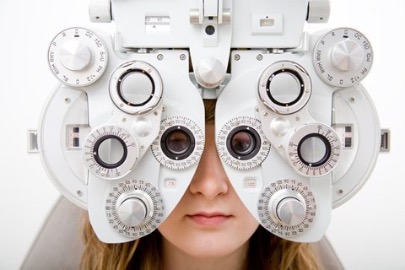The graph generally applied is really a called a Snellen chart. It’s called following a Dutch eye doctor named Hermann Snellen who developed it in 1862. The words are big at the top and get gradually smaller as you move down the chart. The depth of the lines that make up the words, is add up to the width of the spots between the lines. The top and thickness of the words is five instances the width of the lines.
You can have noticed the phrase “20/20 “.That is generally recognized to mean great vision. Actually, many people who have great perspective have vision much better than 20/20. It means that you can see, from 20 feet, what you need to be in a position to see from 20 feet. We now actually use 6/6 in place of 20/20. That represents the differ from legs to meters (20 legs means 6 meters). If you can see 6/5(very excellent eyesight), this means you will see, from 6 yards, what you need to have to get to 5 yards to manage to see. When you yourself have 6/60 (poor eyesight), it indicates you have to be 6 yards out to see what you need to be in a position to see from 60 meters. There are various levels in between.
The first evaluate is named vision. This is a way of measuring what you will see without the help at all. For anyone who does not require glasses and has no vision health conditions, it’s frequently 6/6 or even a small better. As your prescription gets stronger, the second quantity gets higher. The utmost effective page of the graph is usually 6/60. Wanting eyeglasses isn’t the sole reason for that quantity to be higher. When you have eye test manchester problems, may very well not have a prescription but nonetheless only have the ability to see greater letters. That is where in actuality the term visible acuity becomes important.
Your aesthetic acuity shows us how well you will see with the right prescription in your glasses. When you yourself have something very wrong together with your eyes such as for instance cataract or macular degeneration, then despite the perfect set of features for you, you might just see some of the larger letters on the chart. Just how much down the information you can see with the most effective spectacles can be your visible acuity. So, when your optician tells you your eyes have changed; before you buy a new couple of custom cups, you need to know, can it be your prescription and/or your acuity that’s changed. If it’s only a big change in your prescription, that is fine. When it is a decline in your aesthetic acuity, you will need to discover why.
The medical specialist who concentrates in the making and installing of lenses to improve numerous perspective problems that the personal might encounter is termed an optometrist. As well as doing attention examinations, an optometrist prescribes the helpful lens that correlates for the recognized vision concern. In comparison, a dispensing optician stresses upon the filling of those medications by creating and/or fitting the helpful lenses or spectacles/glasses.
The role of a dispensing optician is always to understand the written prescription and ascertain the specifications of the contacts required. Their areas of knowledge let them to share with consumers of the very most appropriate frame, contact and also lens covering after taking into account the clients facial features, life style and occupation. For consumers that visit a dispensing optician with no prescription, the usage of a focimeter that files spectacle proportions, allows them to replicate an existing set of glasses. Moreover, if access to the customer’s files can be obtained, they may be able to replicate or re-make spectacles or contact lenses.

